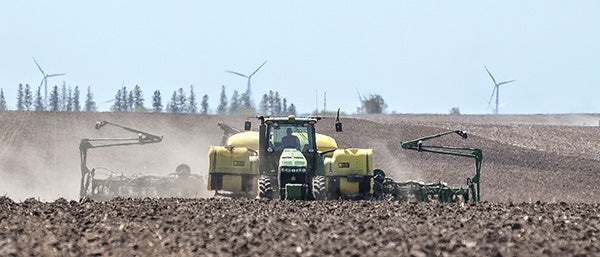Farmers making their way to the fields
Published 8:52 am Friday, May 17, 2019

- Herald File Photo
Farmers are finally getting a chance to get into the fields after an early spring that dumped large amounts of rain and snow over the region.
According to a report from the United States Department of Agriculture, farmers in a number of states struggled to get a jump on the season, including the state of Minnesota, which is lagging behind in both the planting of corn and soybeans.
The report was issued on Monday and showed that average amount of corn acres planted at this time last year was 59 percent for a select number of 18 states. This year that percentage is down to just 30 percent.
In Minnesota, which has seen a late start to planting the last couple years, the percentage of corn acres planted at this time in 2018 was just 36 percent and has been markedly down this year at just 21 percent as of May 12.
Soybeans are sitting much lower at just 3 percent of acres planted in Minnesota as of May 12. Overall, the 18 states listed in the crop progress report are collectively sitting at 9 percent planted.
Still, farmers like Brian Bergene, who farms north of Rose Creek, are just happy to get in the fields and they are making the most of it in a short timespan.
Bergene has finished with his corn planting and says he is almost half done with soybeans.
“Actually, I’m fairly happy with where we’re at,” he said. “Especially compared to the rest of the state and country.”
Bergene has noticed farmers getting later starts to planting over the years, but isn’t necessarily worried about the trend so long as he can still get in the fields in the early part of May.
“Seems like the last few years we haven’t gotten much done in April,” Bergene said. “That’s not all that necessary as long as we can get in early May. There’s not much yield reduction in terms of planting date.”
Bergene is hoping that the rest of the season presents a good mix of both sun and moisture, so long as there’s not an imbalance of either.
“Last year we got too much moisture,” he said. “The last few years have been a struggle. We need heat and continued, timely moisture.”



